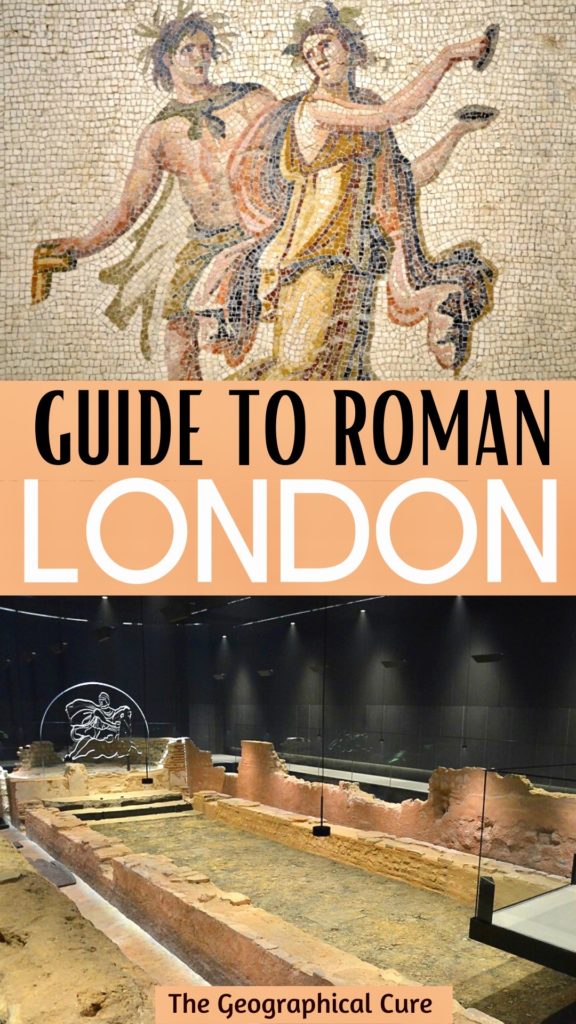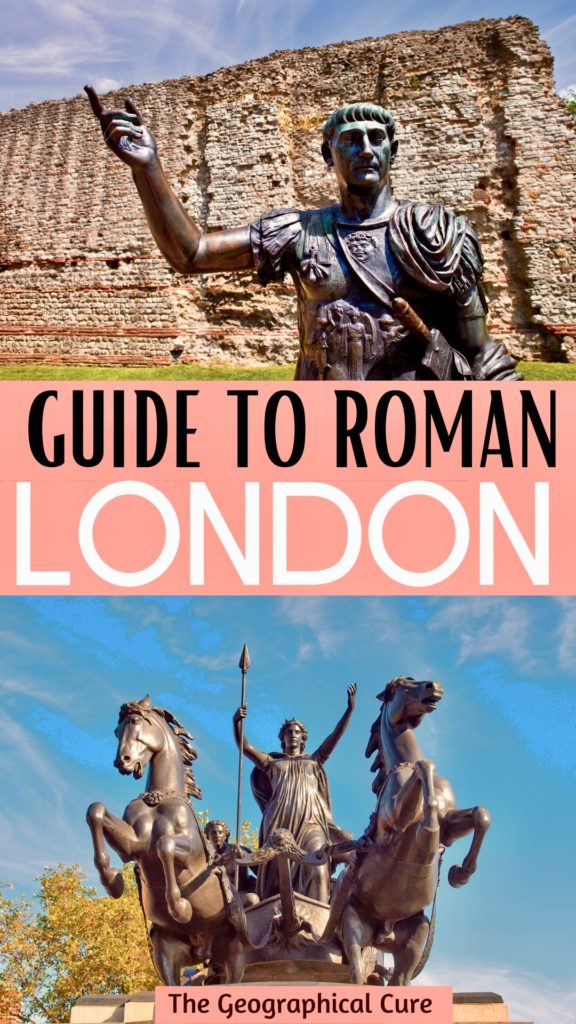This is the ultimate guide to immersing yourself in the many attractions of Roman London.
The history of London is one of invasion and conquering. Apart form prehistoric tribes, the Romans were the first to takeover. Indeed, the Romans named the country “Britainia” and its capital city “Londinium.”
History of Roman London: What Was Londinium?
One doesn’t typically think of London as a place to discover Roman ruins. But, in fact, Julius Caesar and the Roman Empire swept through Britain in 50 B.C.
Caesar landed in the county of Kent in southeast England, but found little there of note and headed home. However, in 43 A.D., Claudius was of a different mind.
He moved in and established a city known as Londinium, which covered 3,000 acres in what is now central London. Because of its strategic position on the Thames River, it became one of ancient Rome’s most important outposts.
The first thing the Romans did was build a bridge over the Thames, near the site of the current London Bridge.
What the Romans didn’t count on was decades of fierce resistance by the local clans. In 60 A.D., the warrior queen Boudicca had had enough.
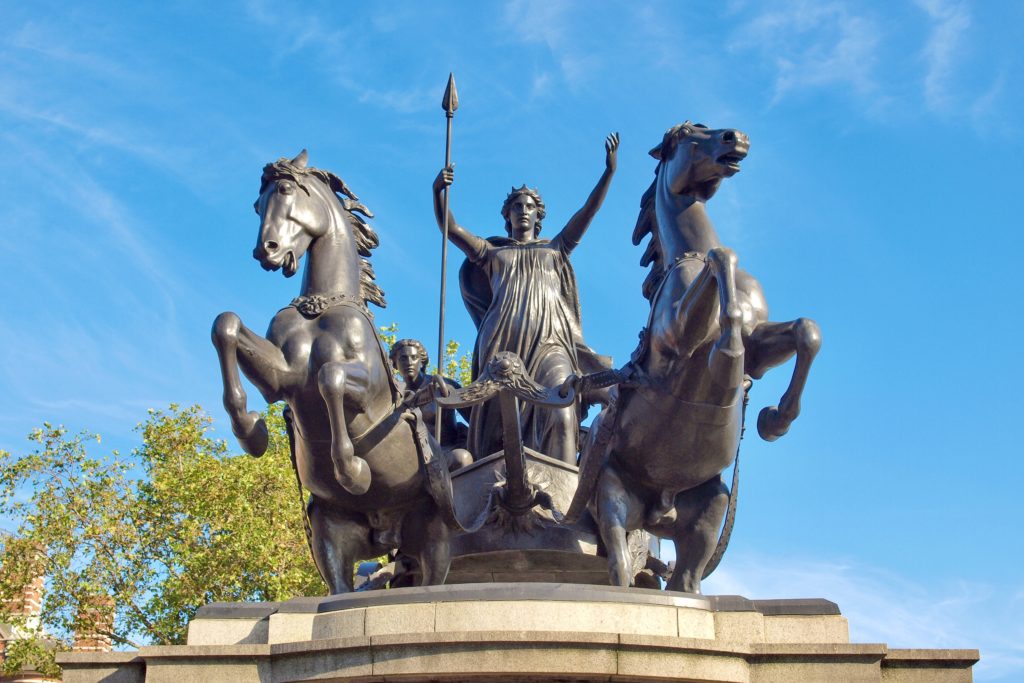
The Roman grossly mistreatment her family and stole their property. She was beaten and her daughters raped.
Boudicca staged an uprising and burned Londinium to the ground, killing an estimated 70,000 Romans. The Roman governor, Suetonius Paulinus, launched a counterattack and defeated the rebels. Boudicca committed suicide, rather than be captured.
If you want to pay homage to one of history’s great figures, there’s an imposing statue of Boudicca at the northern end of Westminster Bridge.
In 70 A.D., the Roman embarked on a massive reconstruction. They built a fort that could accommodate up to 1,000 troops. It covered 12 acres and was square in size.
Around 190, during the reign of Severus, Rome further defended its turf by building massive city walls They were made with a hard bricks quarried near Maidstone in Kent. Originally, 7 gates controlled access and egress to the city.
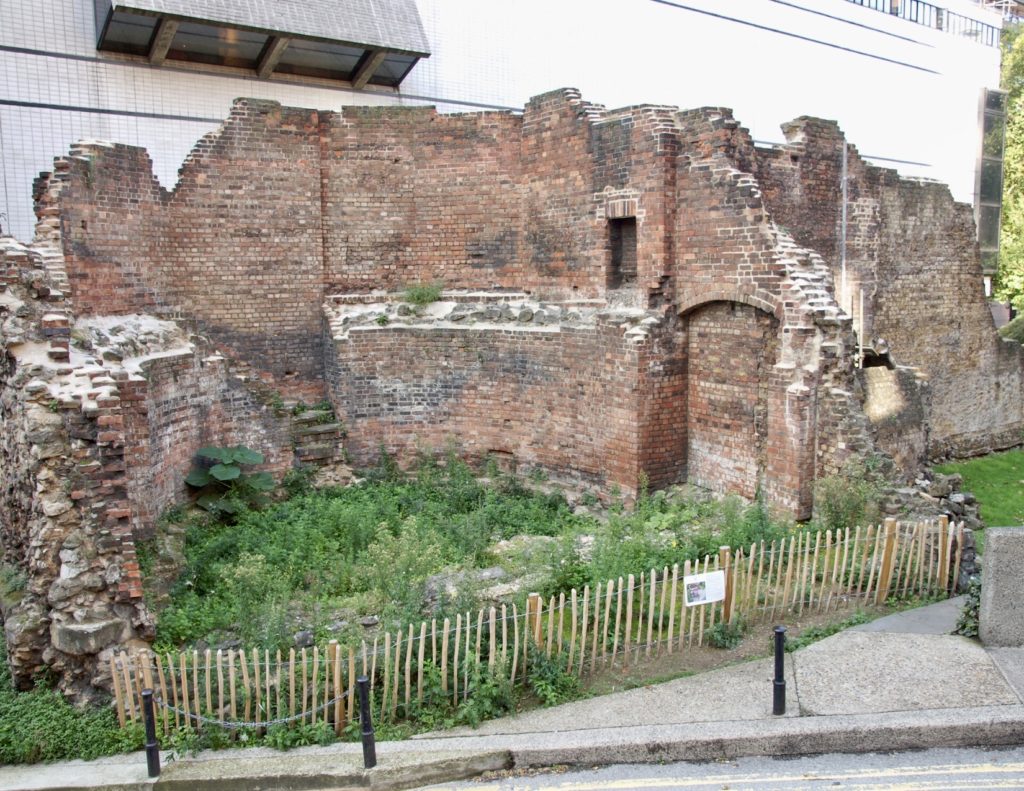
By the start of the 3rd century, London was completely “Romanized.” Londinium was the hub for a lucrative trade with the continent and a commercial capital with over 45,000 residents. Emperor Gratin renamed Londinum “Augusta,” an honorific referring to the Rome’s first emperor.
In the 4th century, the Roman Empire began to crumble. It was suffering from a mix of ailments — barbarian incursions, military overspending, territorial over-expansion, political instability, social inequality, and over-dependence on slaves.
As Rome’s prospects floundered, so too did Londinium’s. In 410, Emperor Honoruius ordered all Roman troops to return to Rome. Left to their own defenses, the citizens fell prey to the Saxons’ hostile attacks.
By the 5th century, the city of Londinium was largely abandoned. Over time, the ruins were buried under layers of soil and new buildings.
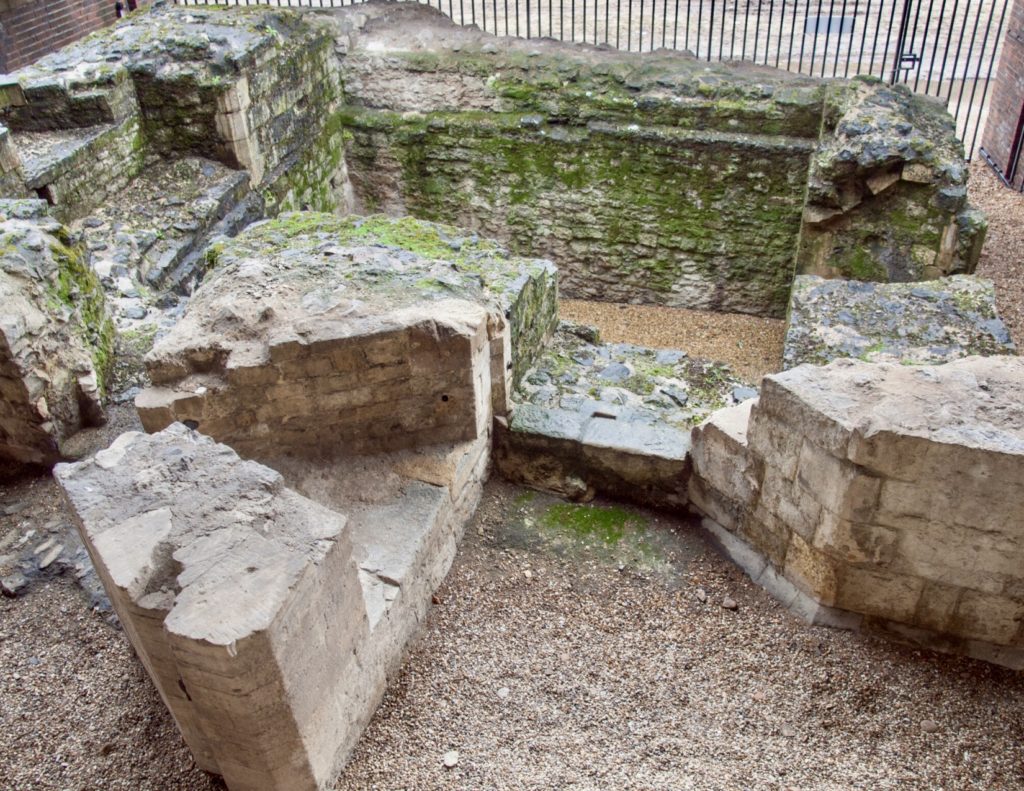
Guide To Roman London: Where To See Roman Ruins
Now, for the good stuff. If you’re a history lover like me, you’ll be happy to know that London has quite a few remnants of Roman sites.
Let’s step back in time and see where to find Roman London.
If this virtual tour inspires you to visit London’s medieval attractions, you can book a 3 hour guided tour of Roman London to see them in real life.
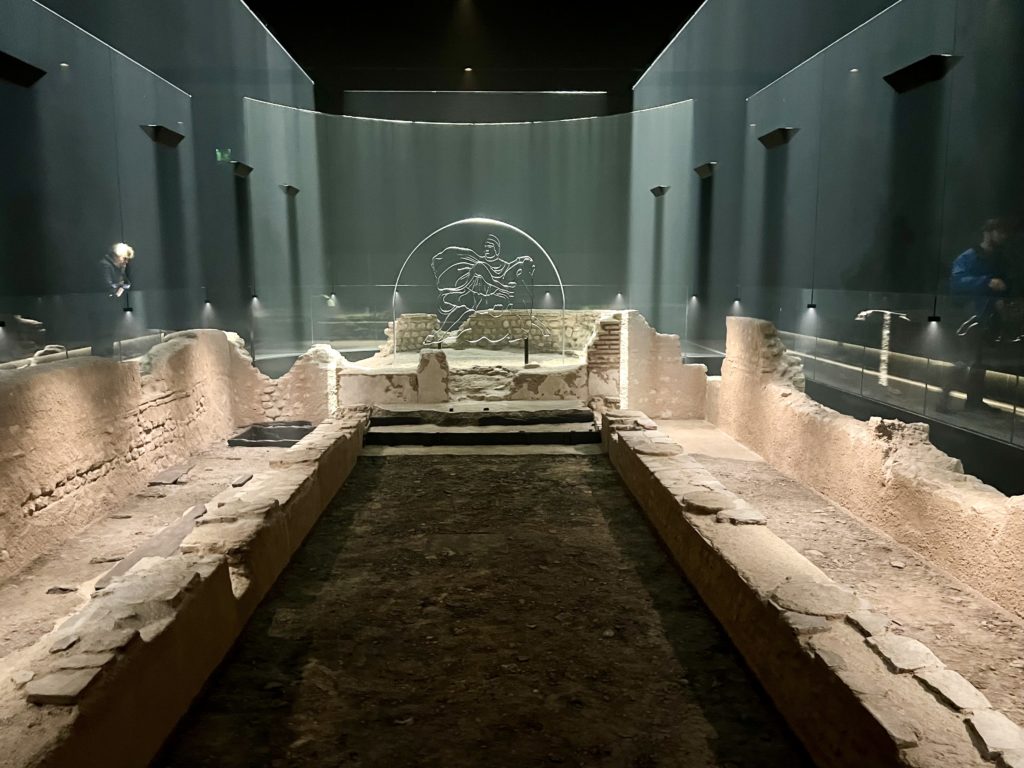
1. London Mithraeum
The Roman Temple of Mithras is a Roman temple in the center of London and it is completely free to visit. It’s one of Britain’s most important archaeological sites, one of only a 100 Mithraic temples found from Ancient Rome.
The Christian-style pagan temple was discovered in 1954. As part of the Bloomberg Project, it was excavated in 2010-14 and moved inside to a safe and publicly accessible space.
Very little is known about the Roman cult of Mithras and its rituals. The cult’s central icon is an image of Mithras killing a bull, which has been interpreted as a creation myth.
You’ll see the reconstructed temple and a remarkable collection of artifacts uncovered during excavation. Free guided tours leave every 20 minutes. There’s an exhibition space with information while you wait for your turn.
Here’s my complete guide to the London Mithraeum.

2. Billingsgate Roman Bath House
Another Roman site is the Billingsgate Roman Bath House. Like the Mithraeum, it was part of ancient Londinium.
You’ll find it underneath an office complex on Lower Thames Street. The bath house was abandoned after the fall of Rome.
First discovered in 1848, the ruins were once an impressive bath house with a courtyard and underfloor heating. The best preserved part of the ruins is a hot bath with hypocausts, which were used for heating the room.
Artifacts discovered during excavations are in the Museum of London, site in Roman London that I discuss below.
The site opens to the public on Saturdays via guided tours. You can also visit this site on a tour of Roman London.
Address: 101 Lower Thames Street
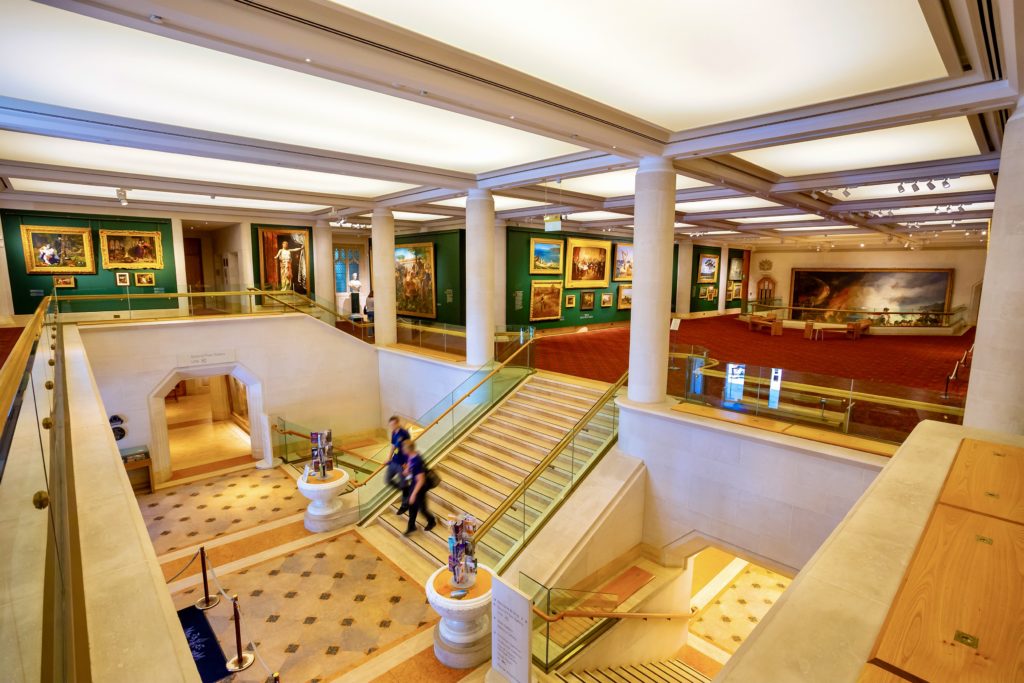
3. Amphitheatre – London Guildhall
In 1985, the city of London began constructing an art gallery associated with the Guildhall building from Medieval London. It wasn’t long until construction unearthed the 2,000 year old ruins of the only Roman amphitheater in Londinium.
Like most Roman amphitheaters, it was used for entertainment, including gladiatorial fights, animal fights, and executions. As proof of this, the archaeologists found skeletons of humans, a bear, a bull.
The amphitheater likely had an elliptical shape and a seating capacity of 7,000 spectators.
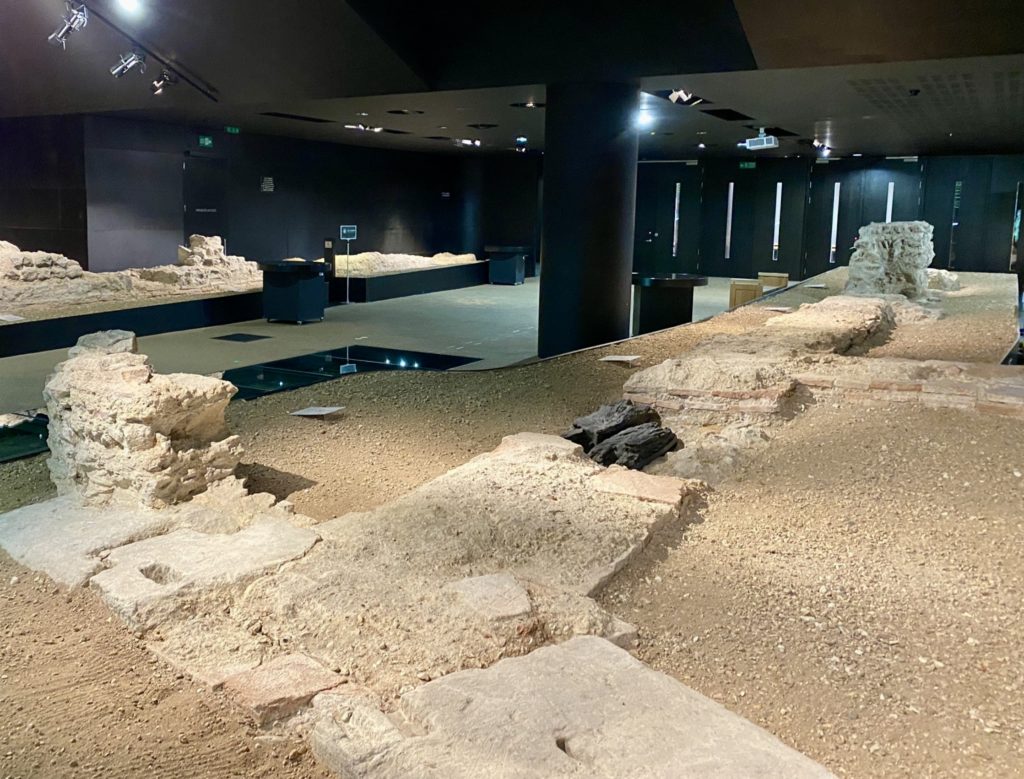
Construction proceeded carefully. The amphitheater ruins were incorporated into the design of the new art gallery and are now on permanent exhibition. They are also free to visit during gallery hours.
The ruins are 26 feet below ground level. A digital projection recreates the layout of the amphitheater. There are also artifacts on display at the gallery.
Outside, a large circular line in dark stone was paved into Guildhall Yard to mark the outline of the amphitheater below.
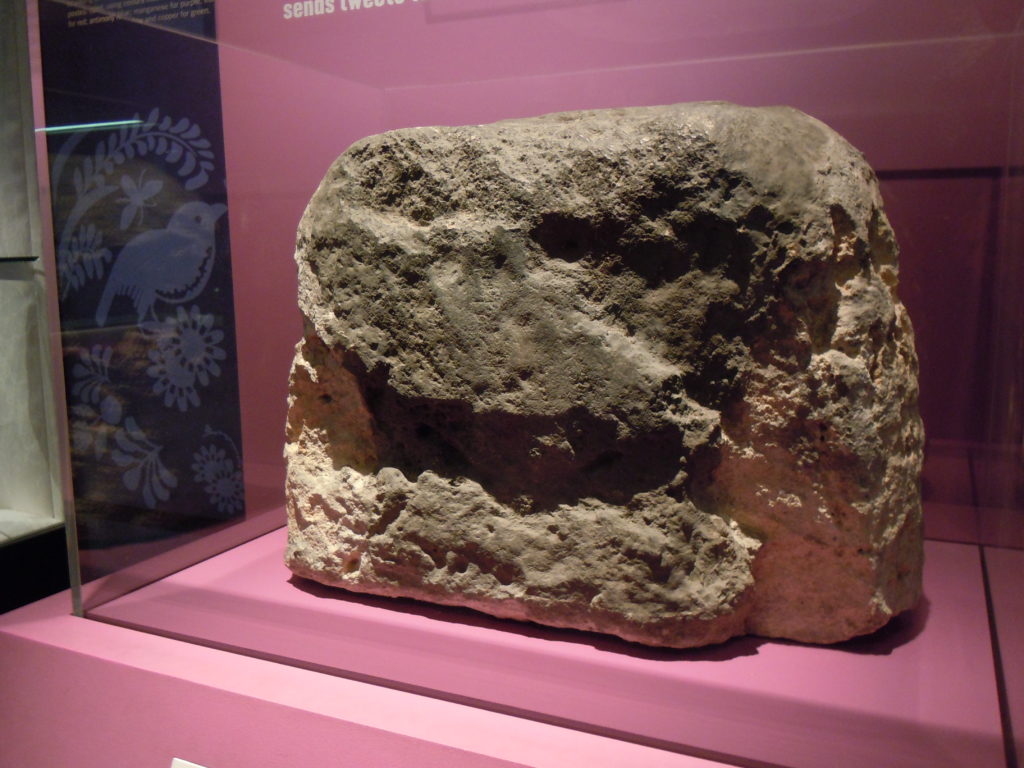
4. London Stone
The London Stone is stored in a glass covered cubbyhole in the wall of the modern Bank of China. It’s a miliary, or milestone, that was used to measure distances of Roman roads. Or at least it had some use in transportation.
Like most ancient things in London, the stone has been associated with King Arthur.
Legend also holds that in 1450, Jake Cade, leader of a rebellion against Henry VI, struck his sword against it and declared himself “Lord of the City.” The event was dramatized in Shakespeare’s play Henry VI.
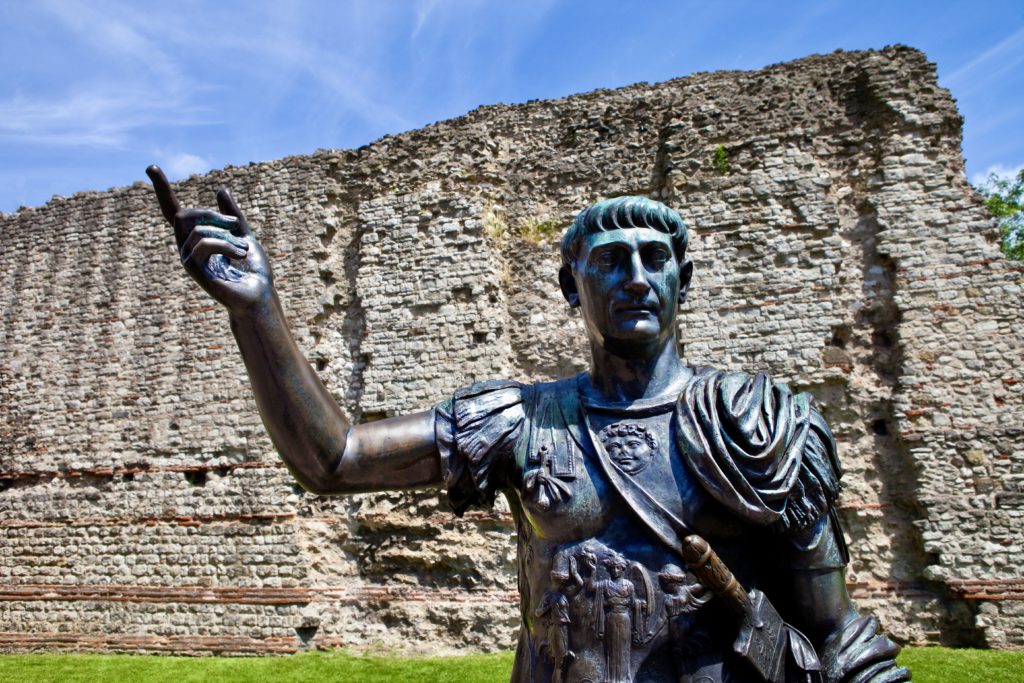
5. London Wall
Did you know you can walk along the ancient Roman Walls? They were built by the Emperor Claudius Albinus in the 2nd and 3rd century A.D. The walls continued to be expanded until the end of Roman London.
In 1984, the Museum of London put together a self-guided walking route of the remaining sections of the wall. You can actually buy a book describing the walk at either the Museum of London or the Guildhall.
It’s a 1.75 mile walk with 21 sites that starts at the Tower of London and ends at the Museum of London. It will give you a sense of the boundaries of Roman London.
If you’re visiting the Tower of London, I would do that in the morning. Then, in the afternoon do the wall walk to the Museum of London and see some other Roman goodies on display there.
Be forewarned, parts of the walk are in a high traffic area. There used to be 21 plaques explaining the sites, but many of them are missing now.
The best preserved section of the Roman London Wall is an impressive 110 foot long chunk on Tower Hill near the Tower of London. The wall was likely over 20 feet tall in this spot. The ruins come complete with with a statue of Emperor Trajan.
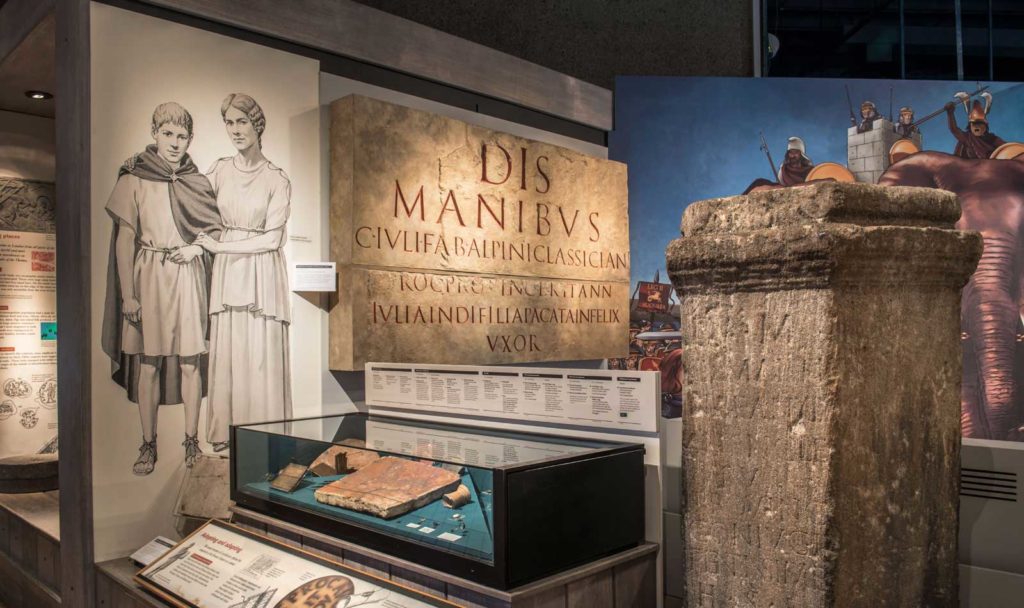
6. Museum of London
No tour of Roman London would be complete without a visit to the Museum of London. It’s an under-appreciated city gem with a cache of Roman goodies.
The museum takes you on a journey of the history of London, from its prehistoric first settlers around 450,000 B.C. to today’s contemporary multicultural hub.
You’ll get some fascinating insight into Roman London, from over 2,000 years ago. The Roman collection has more than 47,000 objects, including Roman mosaics, tombstones, coins, and leatherwork.
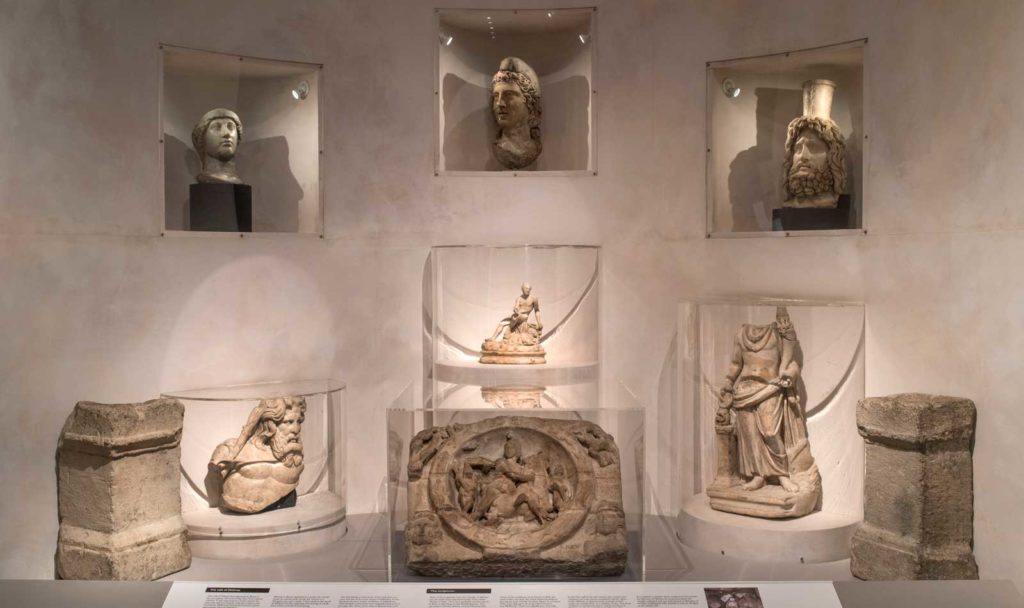
The museum also houses artifacts excavated from the Mithraeum I discussed above, including the statuary heads of Mithras, Minerva, Serapis, Bacchus, and Cautopates.
From an observation deck, you can see a major section of the Roman wall. It’s placed under glass, so that you can look at the wall up close.
You can also see reproductions of the Roman gates, torn down in the 18th century, that were part of the city wall.
The museum also has an original bronze bust of Hadrian, a Roman girls leather bikini, and dioramas the bring to life a Roman family’s kitchen spaces.
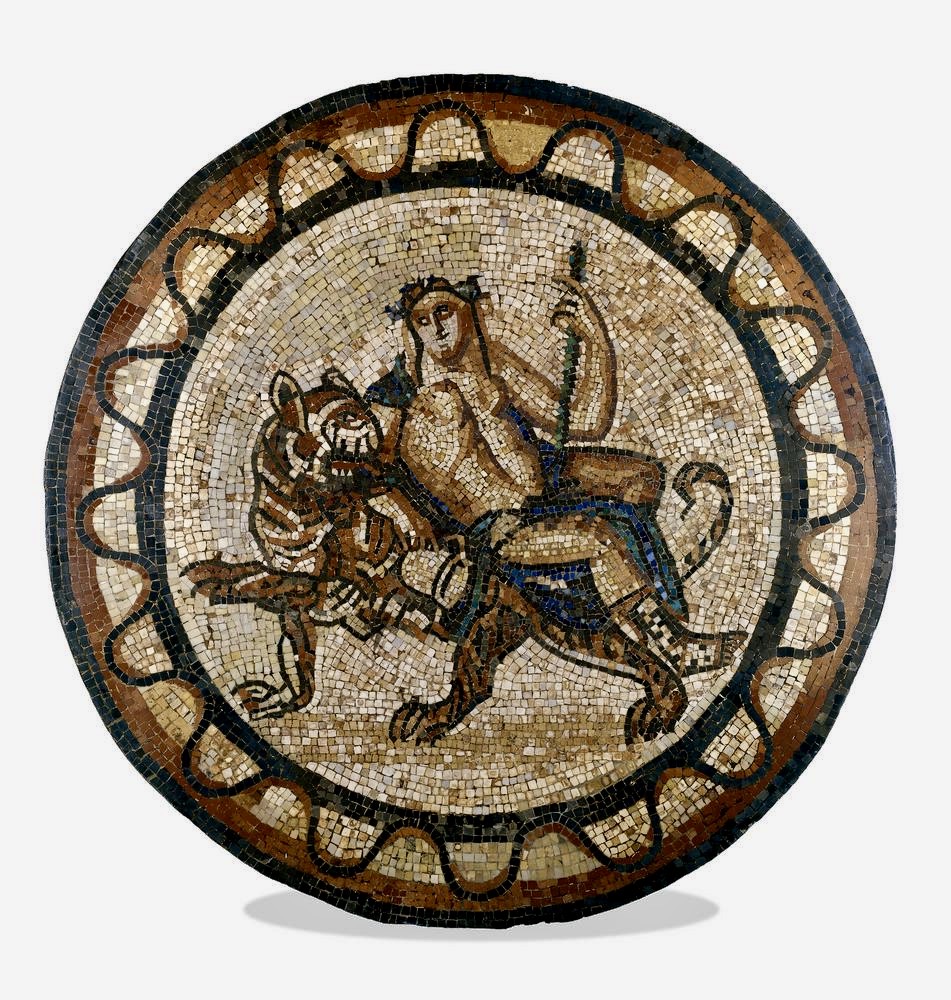
7. British Museum
The British Museum is also a must visit on a tour of Roman London. It has a fascinating array of Roman art on its second floor. There are hundreds of imperial busts.
If, like me, you’re fascinated with the Roman emperors, you can go emperor spotting in Room 70 and meet everyone from Augustus to Caracalla.
The British Museum also houses a rare Roman mosaic. With brilliant amber and yellow mosaics, it portrays Bacchus, the god of wine, seated upon a panther.
If you want to take a deep dive into all the museum’s ancient collections, you can book a 2 hour guided tour of the British Museum or a 2.5 hour private tour.
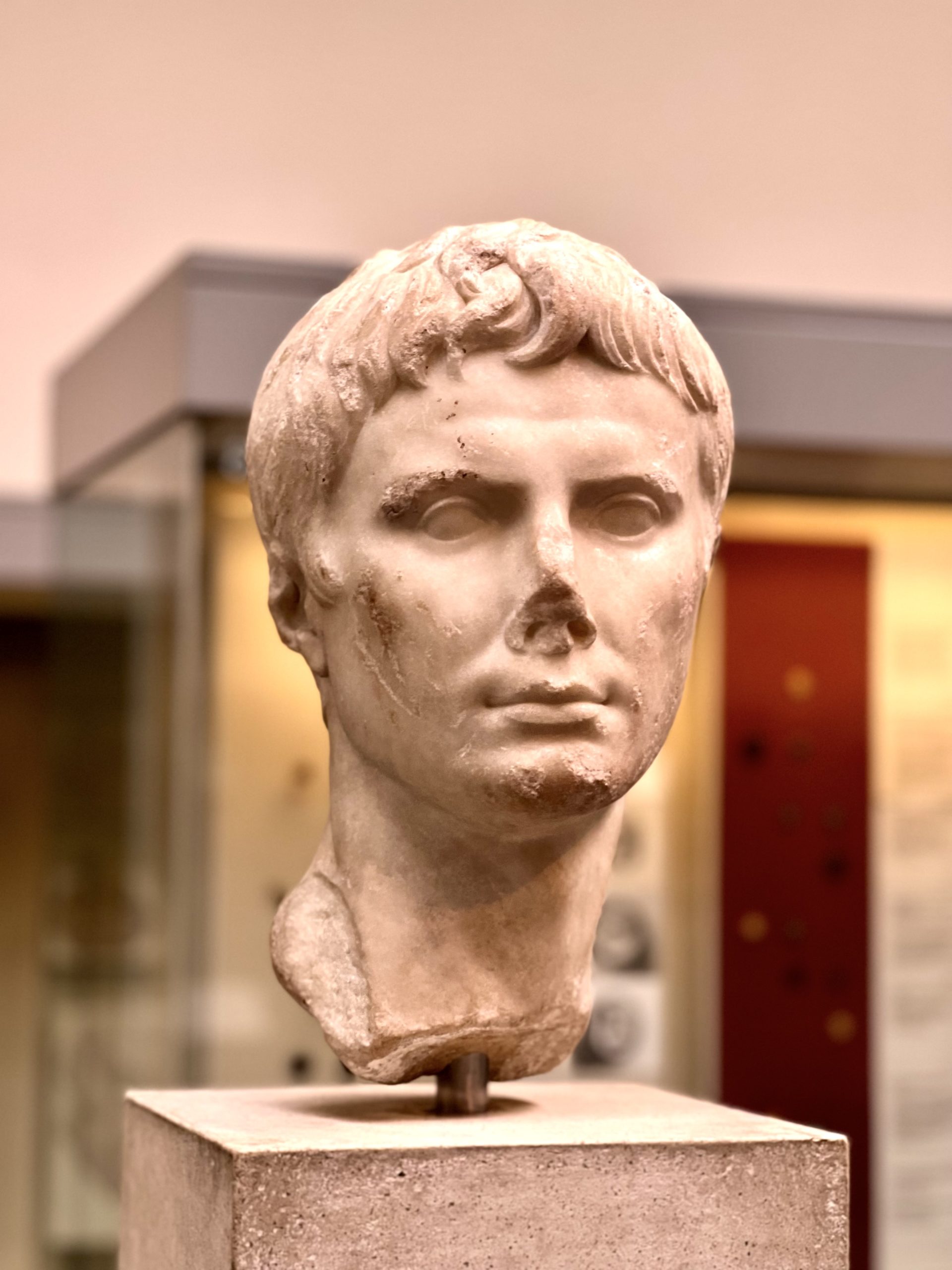
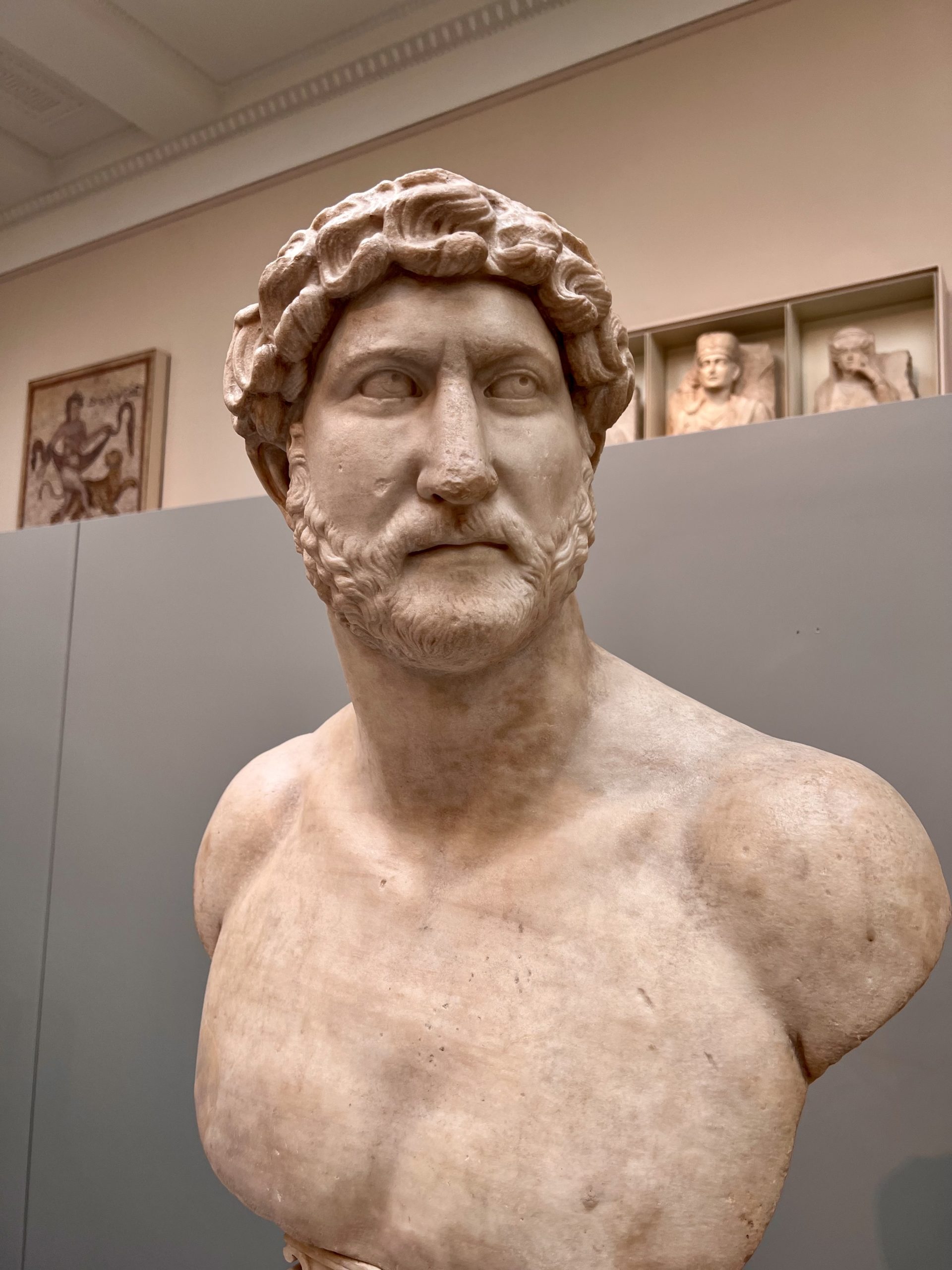
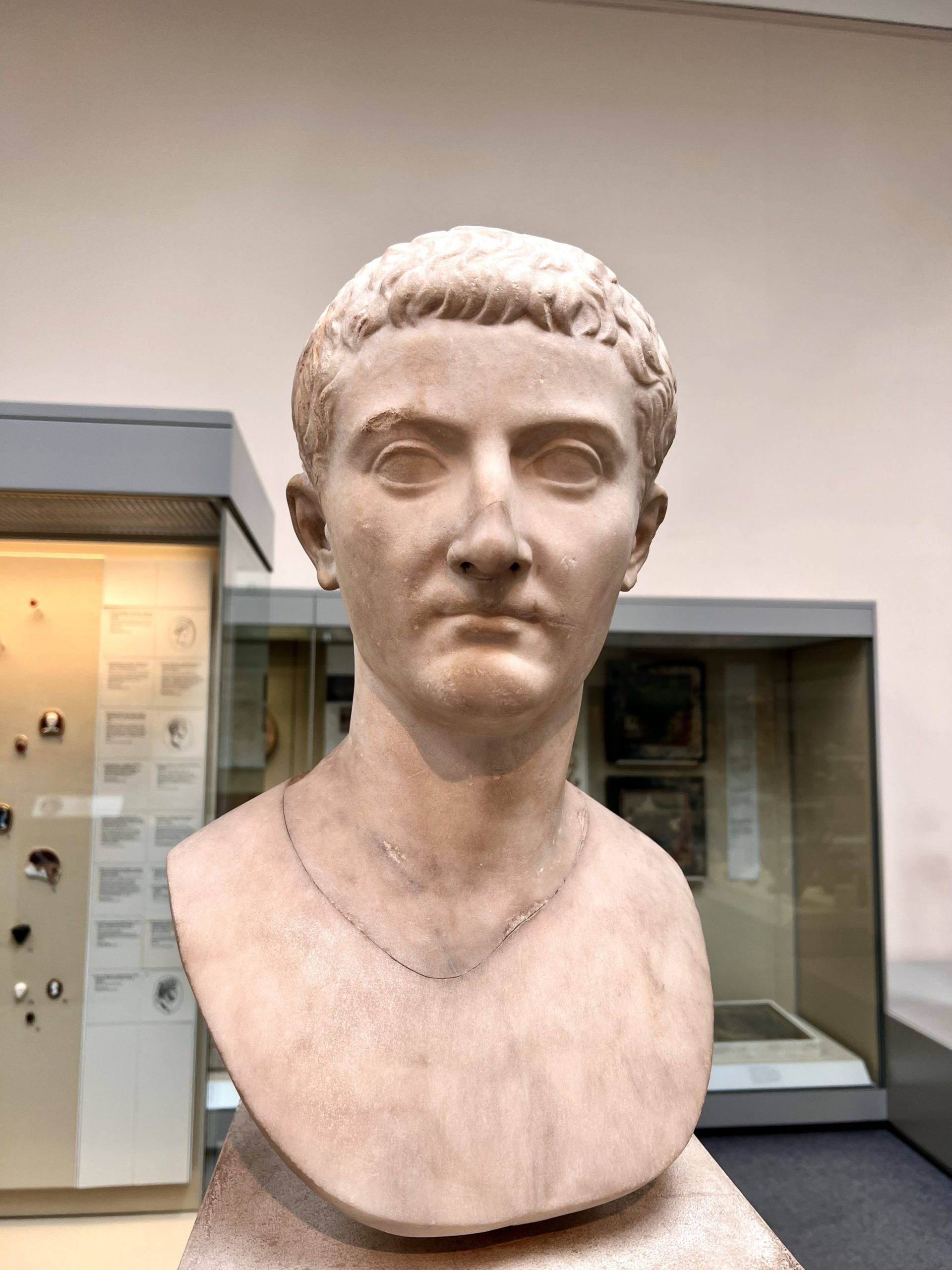
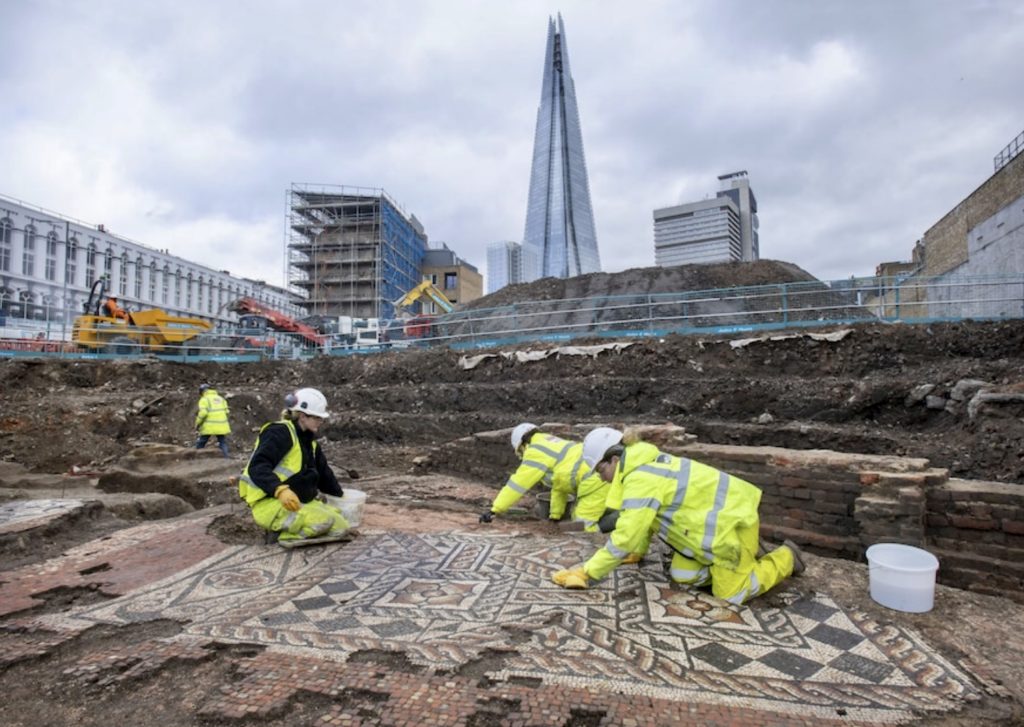
8. Roman Mosaic in Southwark
In January 2022, archaeologists from the Museum of London Archaeology uncovered a spectacular ancient Roman mosaic in the Southwark neighborhood. It’s the largest one found in the last 50 years and is quite well preserved.
Described as a once-in-a-lifetime find, the mosaic likely dates to the late 2nd or 3rd century A.D.
It’s comprised of two intricately decorated panels, the larger of which measures almost ten feet long. They have geometric motifs in red, white, and black and Solomon’s knots made of two interlaced loops.
Judging by its size and the complexity of the design, archaeologists suspect it was from a dining room in a wealthy Roman house. Alternatively, it might have been a “mansion,” a resting spot to entertain high ranking travelers.
The long term plan is for the mosaics to be put on display.
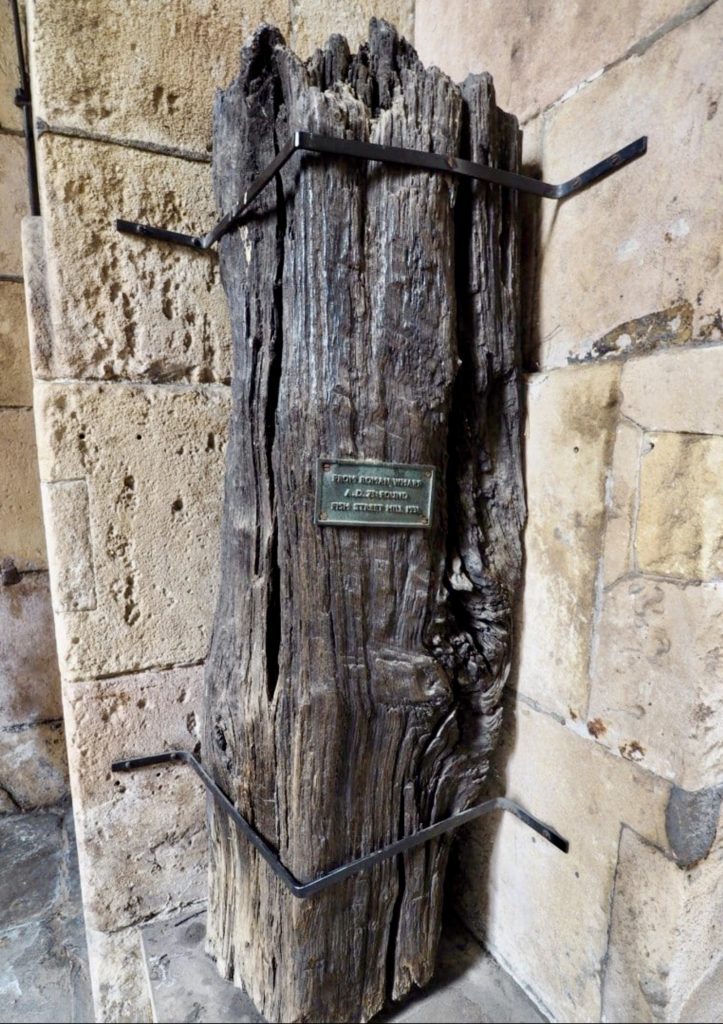
9. St. Magnus Martyr
The small church of St Magnus-the-Martyr on Lower Thames Street has a 2,000 year old piece of wood from an old Roman wharf.
It’s a pilon that was an integral part of the former riverside wall along the Thames. A small plaque attached to the timber claims it is from 75 A.D.
The timber was discovered on Fish Street Hill in 1931. It’s located inside the tower of St. Magnus. Visitors will also find an incredibly detailed, 13 foot long model of the medieval London Bridge in the church.
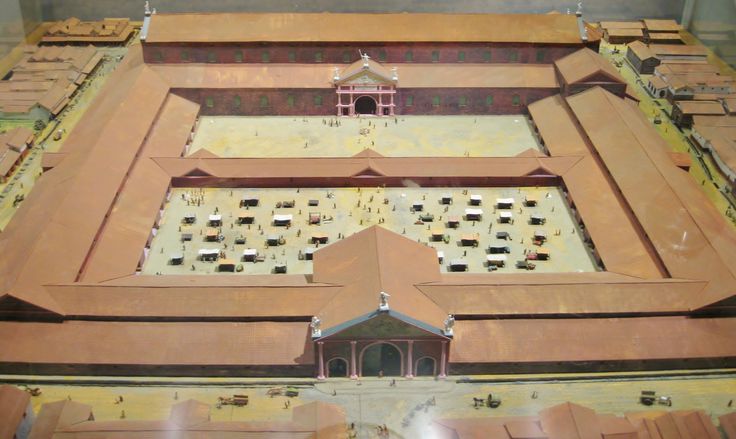
10. London’s Roman Basilica And Forum
Built in 70 and expanded until 130, the Roman Basilica was the civic center of Roman London. It was a public building that once housed administrators, law courts, an assembly hall, the treasury, and shrines.
The basilica was completely lost to history until the construction of Leadenhall Market in the Victorian era.
Today, the excavated remains are housed in the basement of a barber’s shop underneath Leadenhall Market. Stairs take you down to the lower level. You’ll see a pier that served as the base of an arch in one of the basilica’s arcades.
I hope you’ve enjoyed my guide to Roman London. You may enjoy these other London travel guides and resources:
- 3 Day Itinerary for London
- 5 Day Itinerary for London
- Hidden Gems in London
- 30 Day Trips from London
- Tourist Traps To Avoid in London
- Best Castles in England
- Best Museums in London
- Harry Potter Places in London
- Guide to Westminster Abbey
- Guide to St. Paul’s Cathedral
If you’d like to discover Roman London, pin it for later.

